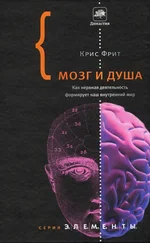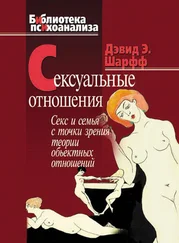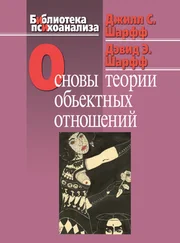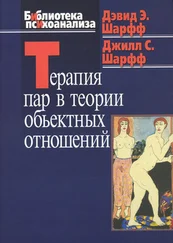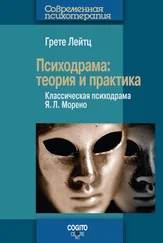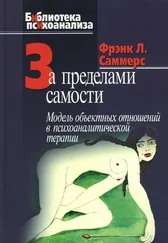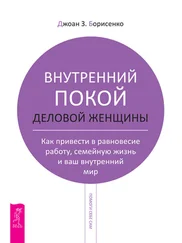Hodes, M. (1990) ‘Overdosing as communication: a cultural perspective’, British Journal of Medical Psychology 63 (4).
Holmes, P. (1983) ‘Dropping out from an adolescent therapeutic group: a study of factors in the patients and their parents which may influence this process’, Journal of Adolescence 6: 333–46.
Holmes, P. (1984) ‘Boundaries and chaos: an outpatient psychodrama group for adolescents’, Journal of Adolescence 7:387–400.
Holmes, P. (1987) ‘Boundaries and chaos’ (revised version), in J. Coleman (ed.) Working with Troubled Adolescents, London: Academic Press.
Holmes, P. (1989a) «The uses of sociodramatic techniques in providing consultation to institutions working with young people’, Journal of the British Psychodrama Association, 4 (2): 29–49; reprinted (1991) in Journal of the British Psychodrama Association, 6 (1 ).
Holmes, P. (1989b) ‘Wheels within wheels: systems within systems: the assessment process’, Children and Society, 3 (3), 237–54.
Holmes, P. (1992) ‘The roots of enactment in psychoanalysis, family therapy, and psychodrama’, in press.
Holmes. P. and Karp. M. (1991) Psychodrama: Inspiration and Technique, London: Tavistock/Routledge.
Isaacs, S. (1948) «The nature and function of phantasy’, International Journal of Psycho—Analysis, 29 (2): 73–97.
James, C. (1980) ‘Transitional phenomena and the matrix in group psychotherapy’, paper presented at the Vllth International Congress on Group Psychotherapy, Copenhagen, 1980.
Joseph, В. (1988) 'Projective identification: clinical aspects’, in J. Sandier (ed.) Projection, Identification, and Projective Identification, London: Karnac.
Karp, M. (1991a) ‘Preface’, in P. Holmes and M. Karp (eds) Psychodrama: Inspiration and Technique, London: Tavistock/Routledge.
Karp, M. (1991b) ‘Depression: it only hurts when you can’t laugh’, Bulletin of the British Psychodrama Association, July 1991: 3–10.
Katz, B. (1966) Nerve, Muscle, and Synapse, New York: McGraw—Hill.
Kernberg, 0. (1975) Borderline Conditions and Pathological Narcissism, New York: Jason Aronson.
Kernberg, 0. (1976) Object—Relations Theory and Clinical Psychoanalysis, New York:
Jason Aronson.
Kernberg, 0. (1980) Internal World and External Reality, New York: Jason Aronson.
Kernberg, 0. (1984) Severe Personality Disorders: Psychotherapeutic Strategies, New Haven & London: Yale University Press.
Khan, M. (1963) ‘The concept of cumulative trauma’, The Psychoanalytic Study of the Child 18: 286–306.
Kipper, D. A. (1986) Psychotherapy Through Clinical Roleplaying, New York: Brunner/Mazel.
Klauber, J. el al. (1987) Illusion and Spontaneity in Psychoanalysis, London: Free Association Books.
Mein, J. (1987) Our Need for Others and its Roots in Infancy, London: Tavistock.
Mein, M. (1946 and 1975) ‘Notes on some schizoid mechanisms’, in Collected Works, Vol. Ill, Envy and Gratitude, London: Hogarth Press.
Mein, M. (1957 and 1975) Envy and Gratitude, in Collected Works, Vol. Ill, Envy and Gratitude, London: Hogarth Press.
Klein, M. (1975) Collected Works, Vol. I, Love, Guilt and Reparation, London: Hogarth Press.
Kohut, H. (1977) The Restoration of the Self New York: International Universities Press.
Laplanche, J. and Pontalis, J. B. (1967 and 1973) The Language of Psychoanalysis, London: Hogarth Press.
Leveton, E. (1977) Psychodrama for the Timid Clinician, New York: Springer.
Lorenz, K. Z. (1952) King Solomon’s Ring: New Light on Animal Ways, London: Methuen.
Lorenz, K. (1963 and 19669 On Aggression, London: Methuen.
McDougall, J. (1986) Theatres of the Mind: Illusion and Truth on the Psychoanalytic Stage, London: Free Association Books.
MacFarlane, J. (1975) ‘Olfaction in the development of social preferences in the human neonate’, in M. Hofer (ed.) Parent‑Infant Interaction, Amsterdam: Elsevier.
Malan, D. H. (1979) Individual Psychotherapy and the Science of Psychodynamics, London: Butterworths.
Marineau, R. (1989) Jacob Levy Moreno 1889–1974, London: Tavistock/Routledge.
Menzies, I. (1970) A Case Study in the Functioning of a Social System as a Defence Against Anxiety, London: Tavistock Institute of Human Relations.
Minuchin, S. and Fishman, H. C. (1981) Family Therapy Techniques, Cambridge, MA: Harvard University Press.
Moreno, J. L. (1934, 1953 and 1978) Who Shall Survive, 3rd edition, Beacon, NY: Beacon House.
Moreno, J. L. (1946 and 1977) Psychodrama, Vol. 1, Beacon, NY: Beacon House.
Moreno, J. L. (1947) The Theatre of Spontaneity, Ambler, PA: Beacon House.
Moreno, J. L. (1951) Sociometry, Experimental Method and the Science of Society, Ambler, PA: Beacon House, The Horsham Foundation.
Moreno, J. L. (1955) Preludes to My Autobiography, Beacon, NY: Beacon House.
Moreno, J. L. with Moreno, Z. (1959 and 1975) Psychodrama, Vol. 2, Beacon, NY: Beacon House.
Moreno, J. L. (1967) The Psychodrama of Sigmund Freud, Beacon, NY: Beacon House.
Moreno, J. L. with Moreno, Z. (1969) Psychodrama, Vol. 3, Beacon, NY: Beacon House.
Moreno, J. L. (1989) ‘Autobiography’, Journal of Group Psychotherapy, Psychodrama and Sociometry, 42 (1 & 2): 1 – 125.
Moreno, Z. (1991) ‘Time, space, reality and the family: psychodrama with a blended (reconstituted) family’, in P. Holmes and M. Karp (edsj Psychodrama: Inspiration and Technique, London: Tavistock/Routledge.
Moses, R. (1988) ‘Projection, identification and projective identification: their relationship to political process’, in J. Sandier (ed.) Projection, Identification and Projective Identification, London: Karnac.
Peris, S. F, Hefferline, R. F. and Goodman, P. (1951) Gestalt Therapy, Harmondsworth: Penguin.
Pines, M. (1983) The Evolution of Group Analysis, London: Routledge & Kegan Paul.
Pines, M. (1985) Bum and Group Psychotherapy, London: Routledge & Kegan Paul.
Pines, M. (1987) ‘Psychoanalysis, psychodrama and group psychotherapy: stepchildren of Vienna’, Journal of the British Psychodrama Association, 2 (2): 15–23.
Pocket Oxford Dictionary (1924) Oxford: Oxford University Press.
Pope, H. G., Jonas, J. M., Hudson, J. L, Cohen, B. M., and Gunderson, J. G. (1983) «The validity of DSM III borderline personality disorder: a phenomenologic, family history, treatment response and long term follow up study’, Archives of General Psychiatry 40: 23–30.
Post, F. (1962) The Significance of Affective Symptoms in Old Age, Maudsley Monograph, London: Oxford University Press.
Racker, H. (1968) Transference and Countertransference, London: Maresfield Reprint.
Reich, A. (1951)’On countertramference’, International Journal of Psycho—Analysis 43: 25–31.
Rogers, C. R. (1970) Encounter Groups, Harmondsworth: Pelican.
Rolfe, Fr. (Baron Corvo F.) (1904) Hadrian the Seventh, London: Chatto & Win–dus.
Rolfe, F. (Baron Corvo) (1934 and 1986) The Desire and Pursuit of the Wfiole: A Romance of Modem Venice, Oxford & New York: Oxford University Press.
Rolfe, F. (Baron Corvo) (1974a) The Armed Hands: and Other Stories and Pieces, London: Cecil & Amelia Woolf.
Rolfe, F. (Baron Corvo) (1974b) The Venice Letters, London: Cecil & Amelia Woolf.
Читать дальше


